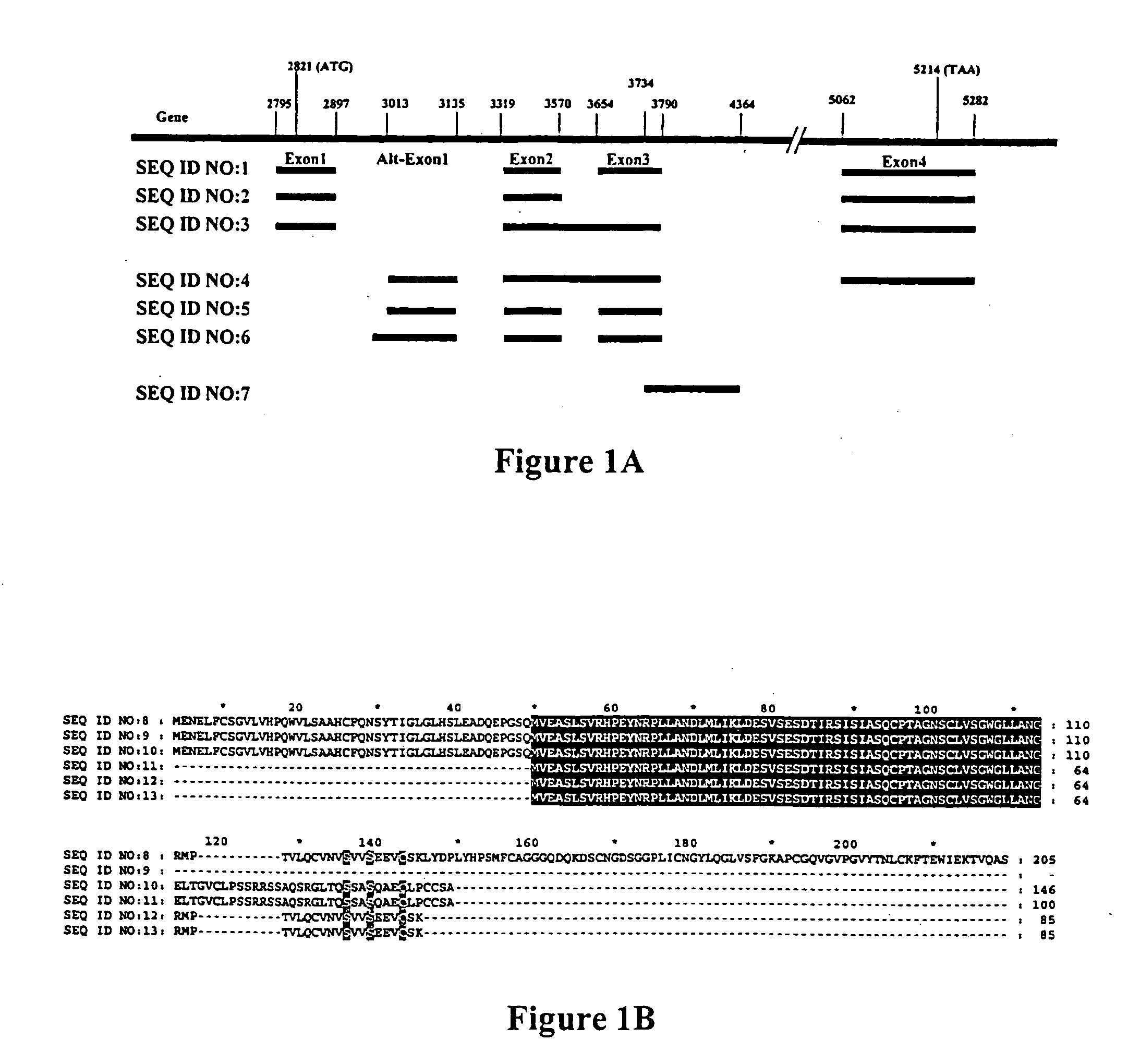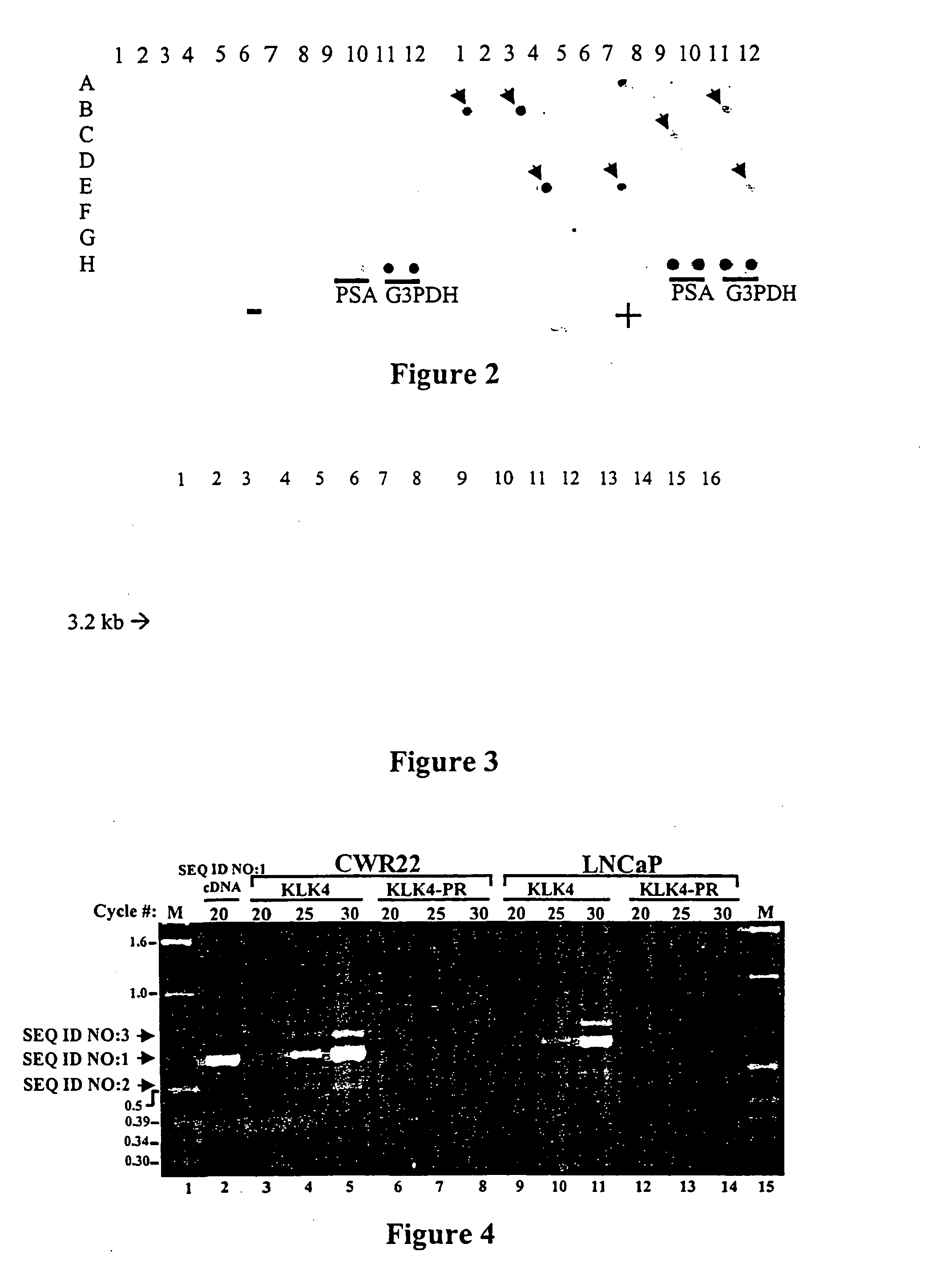Differentially expressed genes in prostate cancer
a technology of differentiating expression and prostate cancer, applied in the field of neoplastic diseases, can solve the problems of increasing increasing the number of prostate cancer deaths, and difficult successful prostate cancer treatment. the prognosis is usually relatively low, and the incidence rate of newly diagnosed prostate cancer is increased
- Summary
- Abstract
- Description
- Claims
- Application Information
AI Technical Summary
Benefits of technology
Problems solved by technology
Method used
Image
Examples
examples
[0044] The following examples illustrate the isolation and cloning of the sequences of SEQ ID NO:1-SEQ ID NO:7 form normal prostate tissue and from prostate cancer cells. SEQ ID NO:8-SEQ ID NO:14, and SEQ ID NO:15-SEQ ID NO:21 are computer generated transcriptions and translations of SEQ ID NO:1-SEQ ID NO:7, respectively.
[0045] The following examples also illustrate a general method of identifying differentially expressed genes in a target tissue, in which in one step a target tissue-specific cDNA library is provided that has a plurality of tissue-specific genes obtained by suppression subtractive hybridization. In a subsequent step, a predetermined quantity of tissue-specific genes is immobilized on a solid phase to form a tissue-specific cDNA array, and a first nucleic acid preparation is hybridized to a first tissue-specific cDNA array to create a first hybridization pattern, wherein the first preparation is prepared from the target tissue without previously exposing the target ...
PUM
| Property | Measurement | Unit |
|---|---|---|
| fluorescence detection | aaaaa | aaaaa |
| luminescence detection | aaaaa | aaaaa |
| reverse northern blot | aaaaa | aaaaa |
Abstract
Description
Claims
Application Information
 Login to View More
Login to View More - R&D
- Intellectual Property
- Life Sciences
- Materials
- Tech Scout
- Unparalleled Data Quality
- Higher Quality Content
- 60% Fewer Hallucinations
Browse by: Latest US Patents, China's latest patents, Technical Efficacy Thesaurus, Application Domain, Technology Topic, Popular Technical Reports.
© 2025 PatSnap. All rights reserved.Legal|Privacy policy|Modern Slavery Act Transparency Statement|Sitemap|About US| Contact US: help@patsnap.com



